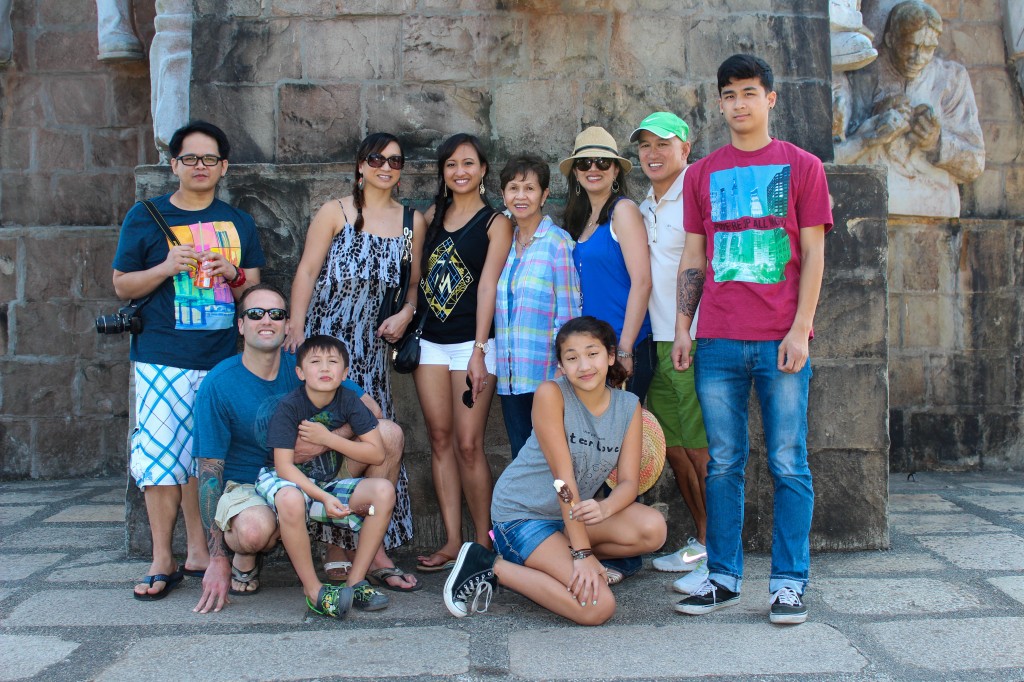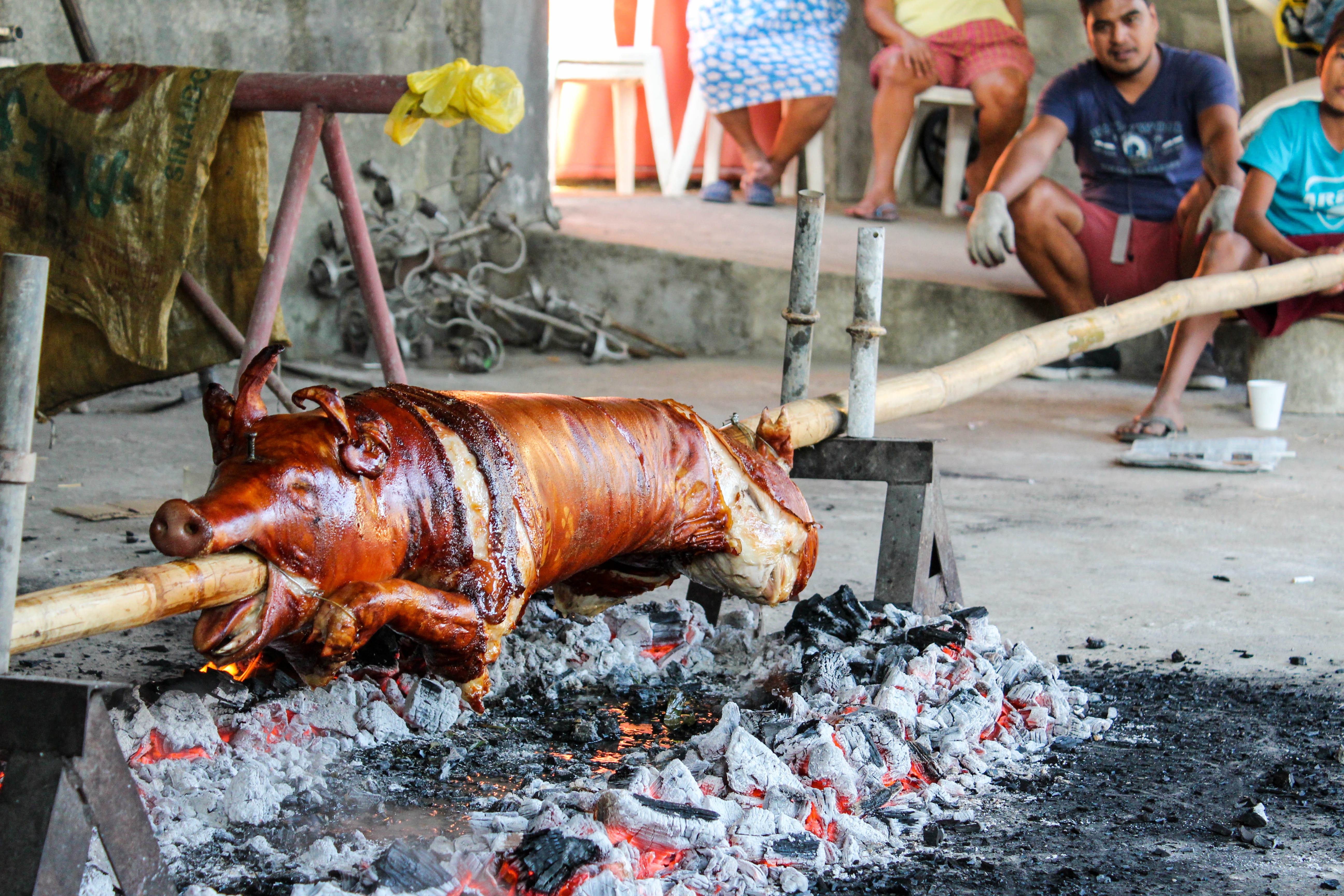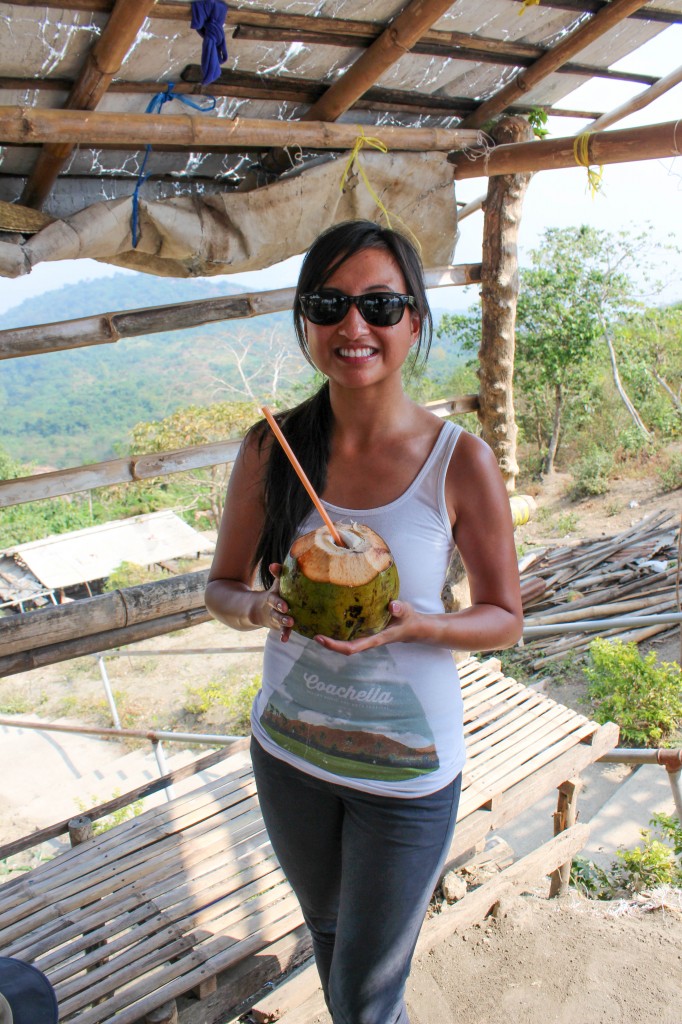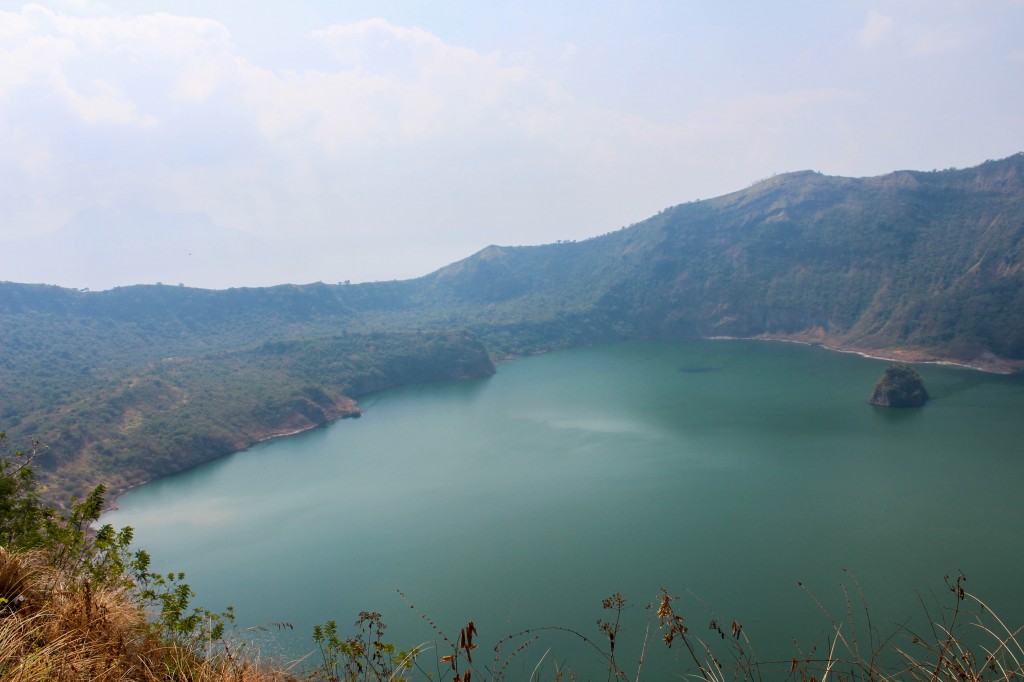
My mother and grandmother could only stay in the Philippines for ~10 days, so my father and I were left to our own devices after their early departure from Manila. He decided to take me to Tagaytay (tuh-GAI-tai), which is a highland city about an hour south of Manila. Tagaytay sits on a ridge at the edge of Taal Lake, which provides the city with gorgeous views of the volcano-formed island in the center as well as the other smaller islands clustered nearby. Because Tagaytay is at a higher elevation and is nowhere near as urbanized as Manila, it is treasured as an escape from the heat and hustle and bustle of the capital city. Many elite Filipinos own vacation houses or condos in Tagaytay, and I grew to understand why during the overnight stay with my father.
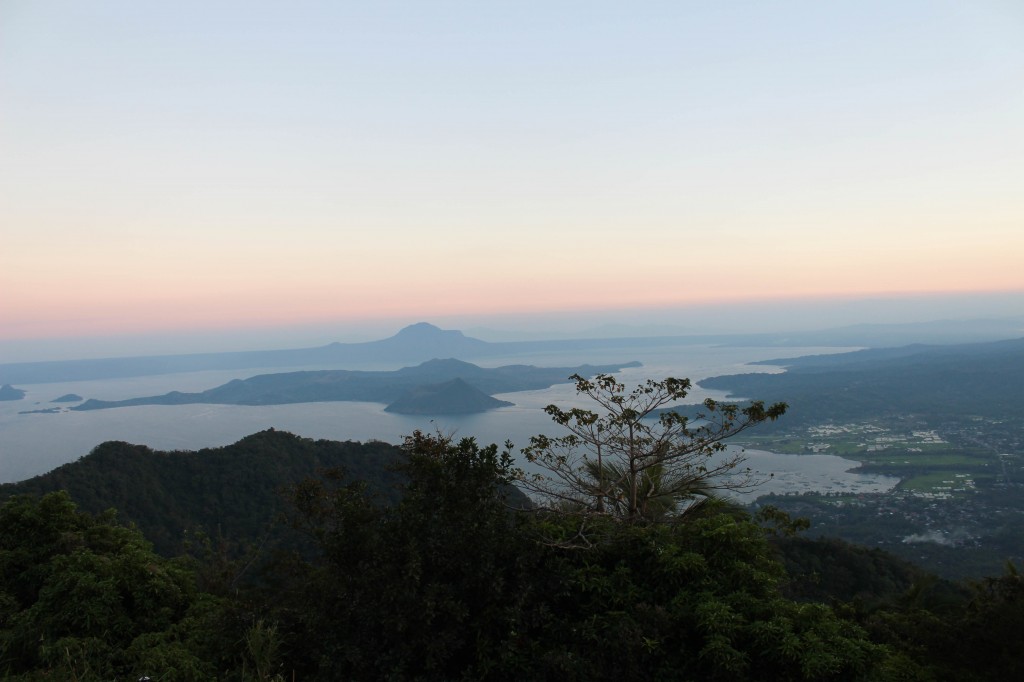
Our adventure started with a zig-zagged, rapidly descending road that sliced down the ridge from Tagaytay to the waters of Taal Lake. After some negotiation on my father’s part, we were led to our banca (a traditional boat outfitted with bamboo riggers) and our boat driver, who cheerfully greeted us and pulled up a plank to help us into the vessel. The next 15 minutes were spent in peaceful silence as our banca glided through the morning mist and skimmed on the water toward the volcano island.
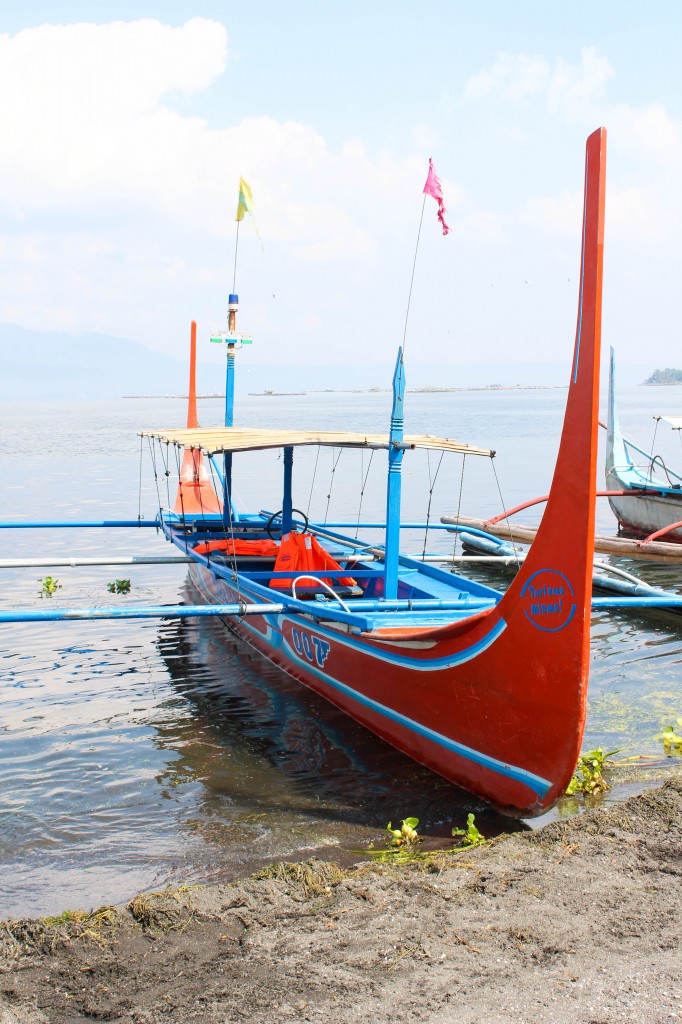
Once we reached shore, we were escorted to a stable where we were assigned our own ponies. Luckily for me, we were also assigned guides that helped steer the ponies onto the correct winding path leading to the volcano’s mouth. As we slowly ascended, we noticed other tourists struggling with the heat, the dust and the steep climb… and the sight of them made me very, very grateful for the hard-working pony I sat upon! When we finally reached the summit, we were greeted by women selling fresh coconut juice for thirsty travelers. And… well, who am I to deny them my business?
The view of the crater lake was impressive, but a bit hazy because of the humidity and the sulfuric gas that was still steaming from underneath the lake. Yes, I did just say sulfuric gas. Taal Volcano is still active, and at certain points along the ride I saw volcanic vents that emitted smoke and the smell of rotten eggs. And unlike the crater lake at Mt. Pinatubo, access is limited to the lip of the volcano because of its current active status. It was a fun ride, but the heat made me grateful for the subsequent boat ride back to shore once we descended.
Unfortunately, the rest of the trip went downhill pretty fast once we returned to Orion–I won’t go into the details other than to say that having the untreated water here by accident is not a vacation for your digestive system. I was bedridden for two days, and so I missed out on the plans that we had made for the rest of the trip. But let’s not talk about the dangers of drinking the water in third-world countries by accident. Instead, let’s talk about how amazing the food in the Philippines is every time I visit!
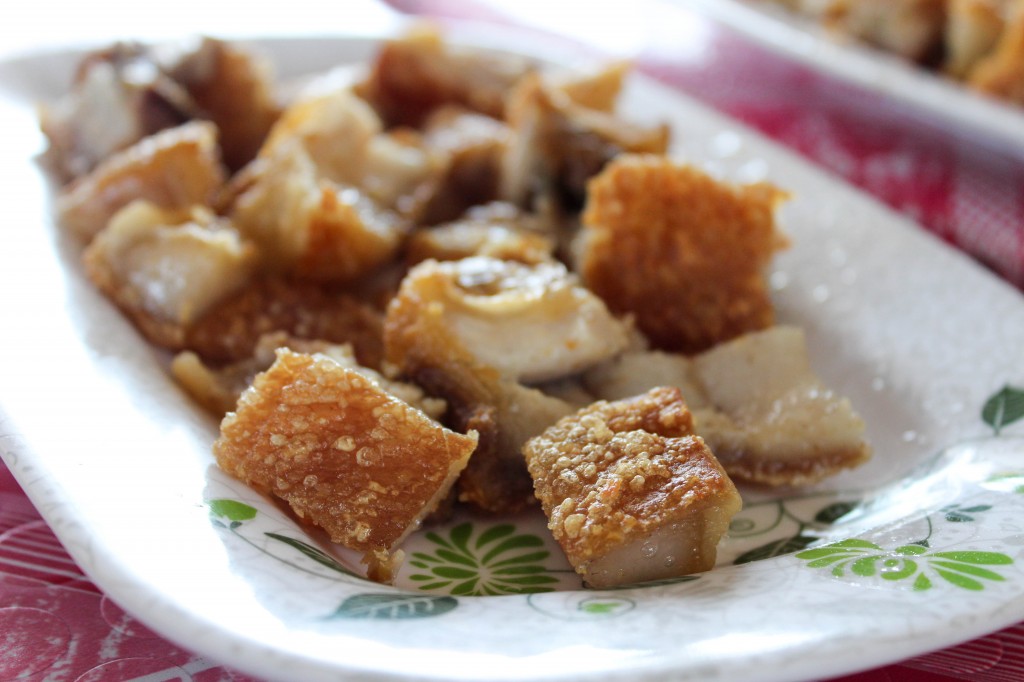
Filipino food (to me) is like the Soul Food of Asia–packed with flavor and unabashed in its lack of healthier options. Even the dishes that aren’t fried are likely still packed with decadent ingredients like coconut milk, liver, and sugar. There are certainly foods in its repertoire that are less unhealthy than others, but I think that most of the ones that define Filipino cuisine are not going to break ground for being diet-friendly. I come to the Philippines armed with this knowledge and determined to eat with moderation. And yet, I usually leave the Philippines much heavier than when I arrived because I just can’t help myself–the food is too good!
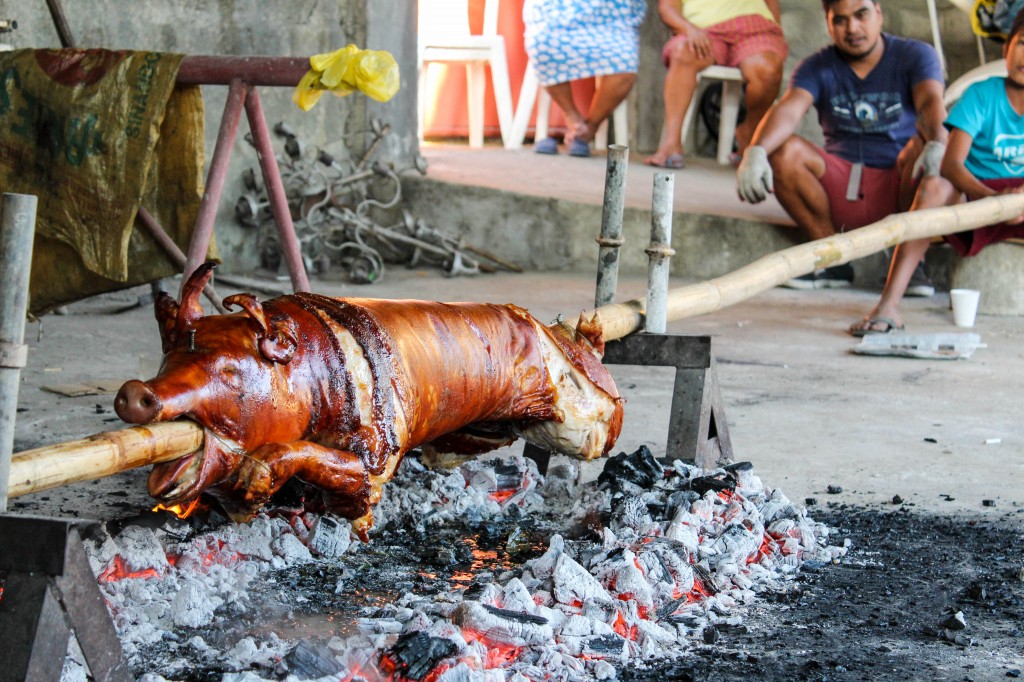
Pork is probably what we’re best known for, and for good reason, as you can see above. With lechon baboy, the whole pig is slowly roasted over a charcoal fire with lower heat over many hours; this allows the skin to crisp evenly on all sides. While being roasted, the skin is basted with sauce to produce the most amazing, savory crunch. There really is nothing I’ve tried in any other cuisine that is equivalent to how damn good lechon baboy tastes when fresh off the spit–especially the skin, accompanied by a chewy layer of fat that melts over your tongue in a wave of umami sensation.
Lechon baboy is usually reserved for special occasions–the one I enjoyed in Orion was for my nephew’s birthday. But what if you’re craving that “this is so delicious I don’t care if I have a heart attack” flavor? Lechon kawali is pork belly that is simmered with flavors such as bay leaves and peppercorn, then deep fried and chopped into bite-sized pieces. (The picture is above the last.) I can feel my arteries hardening every time I eat lechon kawali, but it hurts so good!
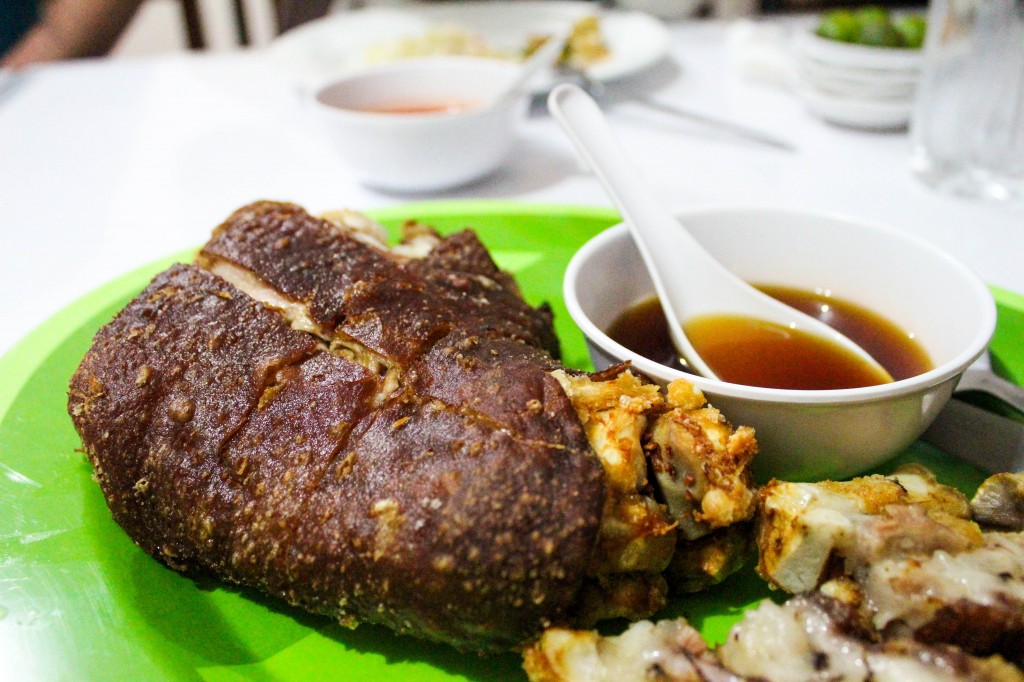
Let’s not forget the other iconic pork dish of the Philippines–crispy pata, or deep-fried pork leg/knuckles! Yes, more deep-fried pork. Are you starting to see a trend here? I’ve seen both leg and knuckles used for this dish, but the more traditional meat used is pig knuckles. The knuckles are marinated overnight, then deep-fried and served with a soy-vinegar sauce. The result is tangy, savory and unreservedly delicious.
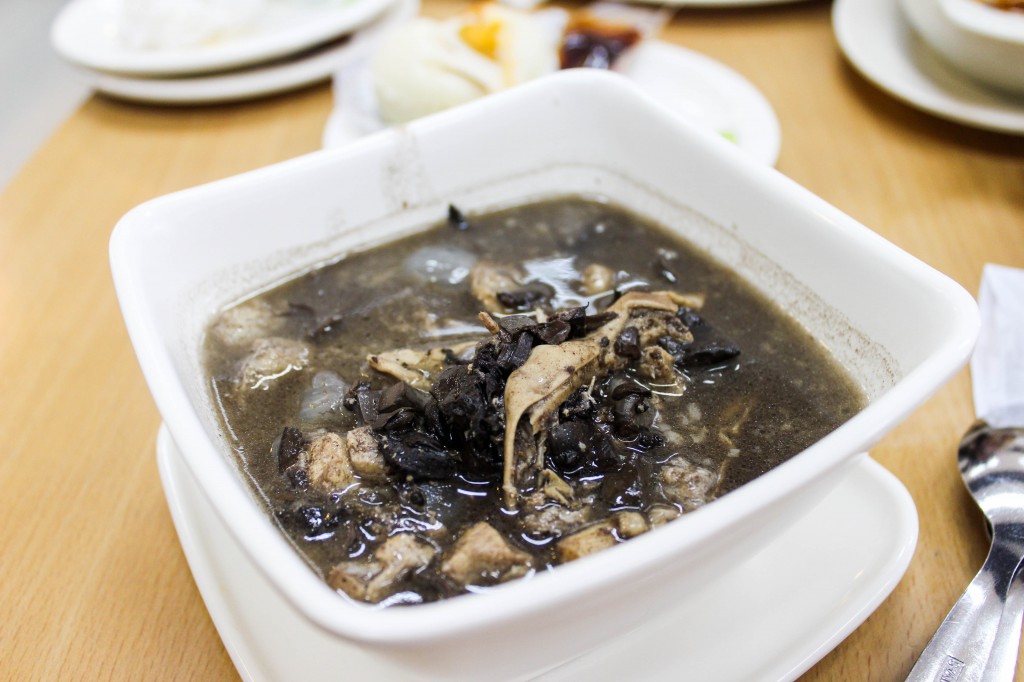
Or perhaps you’d like something unfried? This pig’s blood stew, or dinaguan, stews pork and pig offals such as tripe in pig’s blood spiced with chili, garlic and vinegar. Waste not, want not–all parts of a pig are delicious! Dinaguan is a popular meryenda or mid-day snack when paired with puto–a steamed rice cake, often topped with cheese or a salted egg. Don’t be off-set by the inclusion of offals in the stew (if you’re not already off-set by the inclusion of blood as a major ingredient!). I ended up gobbling down every piece of tripe by the end of the meal!
The bottom line: Filipinos do pork better than anybody. There, I said it, and I’m willing to stare anyone down that tries to prove me wrong!
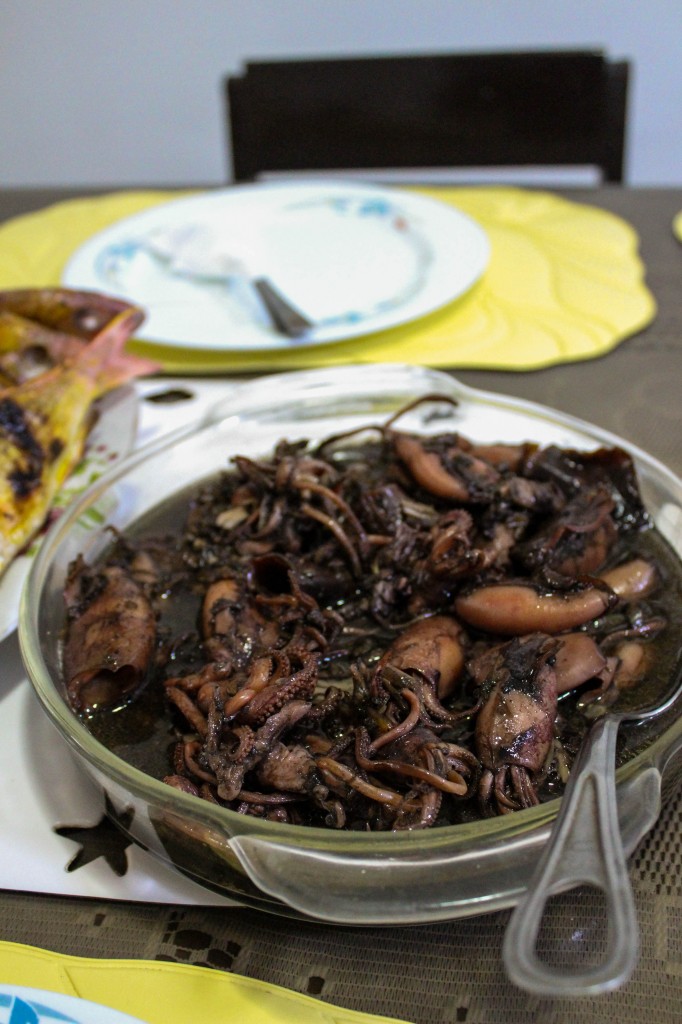
Just because we elevate pork to the next level doesn’t mean that we aren’t equally adept at other proteins. Fish is the obvious example, as the Philippines is the largest archipelago in the world. And while each of these island regions has its own specialties, there are some that transcend regions and become staple dishes of the Philippines itself. One of these preparations is adobong pusit, or adobo-style squid. The small to medium-sized squid is cleaned and prepped, then sauteed with garlic, bay leaves, vinegar and soy sauce. As it is cooked, its ink is released, giving adobong pusit its trademark appearance. My mom’s cousin, or my second aunt, makes the best freakin’ adobong pusit I’ve ever eaten which is pictured above… right before I decimated half of the serving bowl!
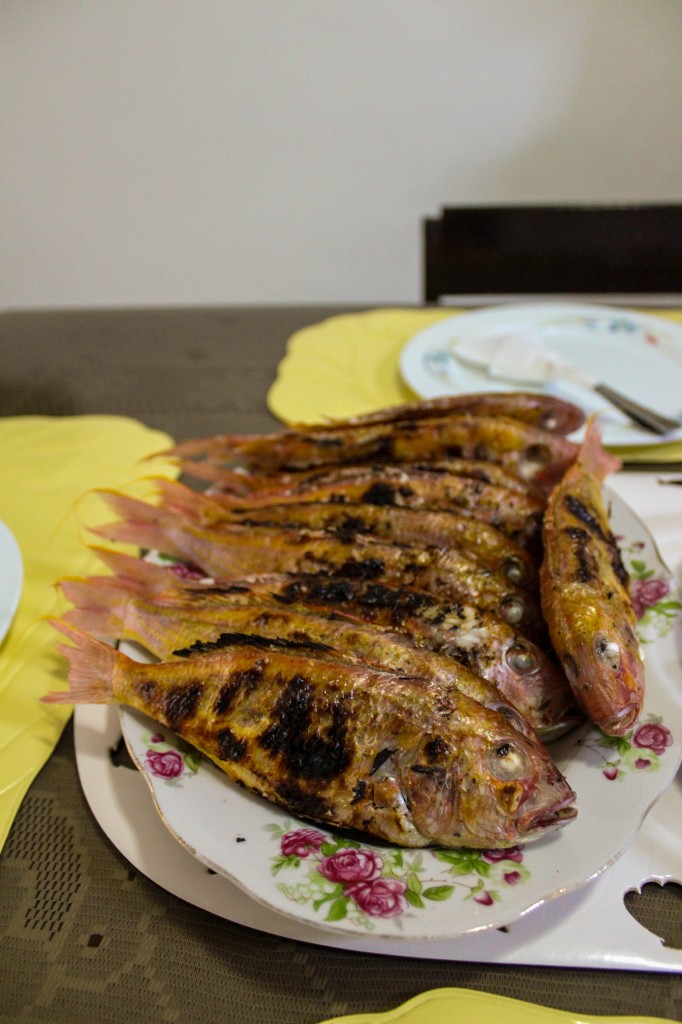
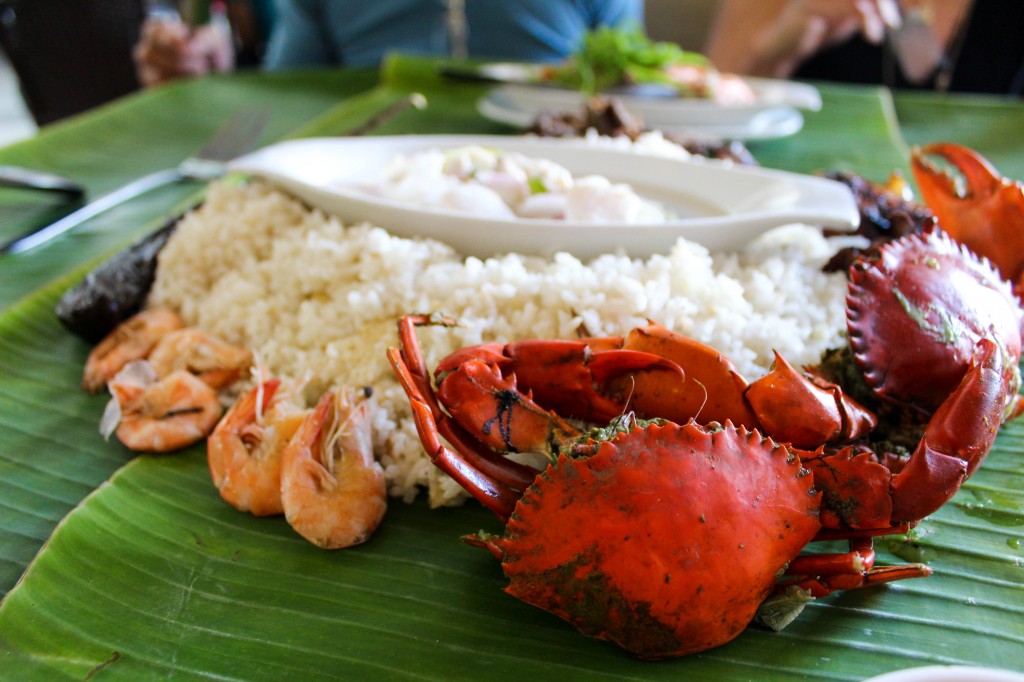
I’m getting a little long-winded here, but I truly love the food in the Philippines. And even though I live in Southern California–which has the largest Filipino community outside of the Philippines itself–the food never tastes quite as good as it does back in the PI. And whenever I go back, my family is more than willing to reacquaint me with how delicious each specialty dish really is… which usually equates to a much heavier Kris on the return flight.
Family and food–through these two linchpins of my life, I feel like I have a direct connection to my heritage and therefore my culture. I know that at my very core, I am American in my thoughts, my preferences and my sensibilities. But my heart and my stomach are Filipino to the core, and I will always be grateful to my family for raising me this way.
